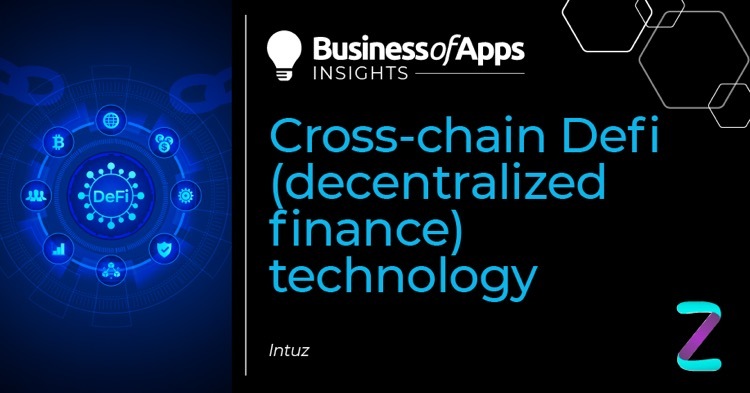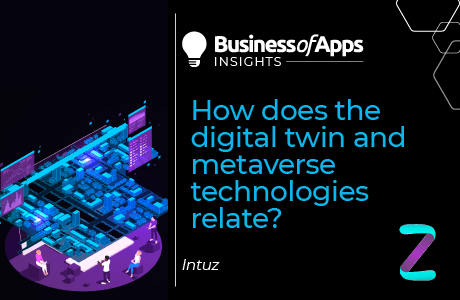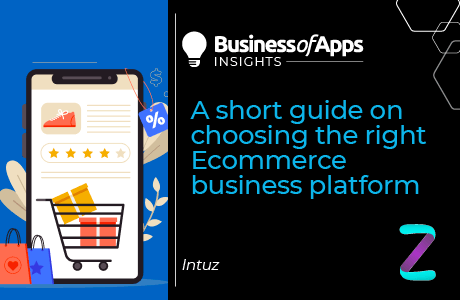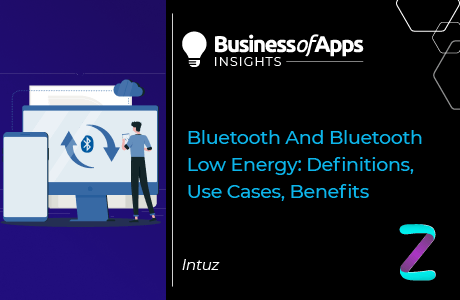Blockchain technology and its applications have significantly brought a transformation across several industries. Enterprises from different business fields use it today to make their operations faster and more secure. The financial sector, too, has substantially benefited from it.
Financial institutions have leveraged blockchain support to revolutionize their services and replace their conventional centralized infrastructure. The use of blockchain has enabled them to simplify their banking processes of lending loans, digital asset trading, and much more.
However, as technology continues to advance and the demand for Decentralized Finance emerges, technologies like cross-chain technology are gaining huge significance. As a result, it is being added to the existing ecosystem of Defi and Crypto to make the overall infrastructure more robust.
So, let us understand and explore this latest addition of cross-chain technology in the blog.
What is Decentralized Finance and Cross-Chain Technology?
Before moving ahead, let us first break down what decentralized finance and cross-chain technology actually mean.
Decentralized Finance
It is a financial technology that uses blockchain technology and cryptocurrency to manage financial transactions. The technology aims to democratize finance by replacing centralized financial institutions with peer-to-peer relationships to facilitate all kinds of financial services, from banking, loans, and mortgages to asset trading.
Some of its key features are:
- It eliminates the processing fees charged by financial institutions to use their services.
- Your money is kept secure in a digital wallet instead of a bank.
- Millions and billions of funds can be transferred in seconds with this technology.
- Technology such as blockchain is used to manage the security of your account.
Cross-Chain Technology
Fire Up Your Growth!
Moburst propelled leading brands like Google, Reddit, and Uber to the next level. Let’s ignite your Success journey today!
Claim Your FREE Growth Fuel!It is a third-generation blockchain technology that enables two independent blockchains to interact with each other and further share resources. This enhances the interoperability between the blockchains and allows them to develop various use cases for several industries.
Despite being highly popular and efficient, the blockchain ecosystem was ignored by several industries. It was so because the blockchain inherently represents a siloed infrastructure. It means it restricts any communication between two non-native blockchain networks, which was seen as a significant limitation by various business industries.
Now that blockchain is powered by cross-chain technology, this limitation is no longer relevant, and a better financial system can be formed.
The Role of Cross-Chain Technology in Decentralized Finance
Defi technology has become highly renowned in a couple of years, and millions of users are using it in crypto and various other industries. However, the technology had a few drawbacks stopping it from mass adoption in many industries. The inadequate liquidity, high transactional cost, and slow transaction execution were some challenges.
However, cross-chain Defi technology is now all set to address these challenges and provide an all-inclusive blockchain-powered ecosystem. Cross-chain technology brings along many interoperability elements, enabling the ecosystem to become united.
With cross-chain enabled blockchains, higher interoperability can be obtained by interconnecting independent Defi platforms, Defi dApps, and Defi marketplaces. Cross-chain enables the users to access diverse Defi platforms via a single platform with a low-cost Defi economy.
Cross-chain Defi technology instantly allows tokens to be swapped across unique and isolated blockchains, offering better inter-blockchain connectivity. It uses the concept of interoperable bridges, allowing users to directly use their tokens on different platforms without converting them through a centralized exchange. With cross-chain technology, decentralized finance will surely become the next big thing.
What are the Different Cross-Chain Defi Platforms?
Many new Defi platforms are coming into existence as cross-chain technology in Defi becomes popular. Here are a few platforms that are already using cross-chain Defi technology:
Defi Lending Platform
Cross-chain DeFi lending platforms help users manage their savings and earn interests across multiple chains by supplying their credits. Users access and interact with different lending platforms and lend loans to interested users to gain profits.
Cross-chain Defi technology offers several great features to make the process streamlined and simple. Some of the features are
- Automated Market Maker (AMM).
- Multichain Defi Wallet.
- Interoperable Smart Contracts.
- Atomic Swap.
- Liquidity Pools.
- Unified Dashboard.
Leveraging these features, cross-chain Defi lending platforms are gaining huge prominence, especially in the eCommerce and gaming sector, where multichain transactions and trading is necessary.
Defi Staking Platform
DeFi staking platforms allow users to profit from their funds by locking a particular portion of the platform’s native token. Furthermore, Defi staking lets you become a validator in any POS (proof-of-stake) blockchain platform.
As the cross-chain DeFi staking platform takes control, staking is now possible for various unique blockchain ecosystems. Users can become validators for different blockchains and use their funds to raise profits.
Defi Exchange Platform
A cross-chain Defi exchange platform lets the users lend & borrow a wide range of crypto assets across different Defi platforms. Users can maximize their interest using these platforms as they can seamlessly borrow or earn interest and also perform their duties as validators.
DAO-Enabled Cross-Chain Defi Platform
A decentralized Autonomous Organization (DAO) is an organization that furnishes rules and facilitates autonomy across the different enterprises that are launching and managing the Defi platform.
Users can invest, trade, and stake their digital assets on DAO-based cross-chain Defi platforms and ensure any centralized body does not oppress them.
Comparison Between Regular Defi Vs Cross-Chain Defi
Let us show you with the help of a table how cross-chain Defi is more efficient than the regular Defi using different parameters:
| Parameters | Regular Defi | Cross-Chain Deli |
|---|---|---|
| Scalability | It offers lesser scalability | It is highly scalable because of its higher speed and efficiency. |
| Interoperability | It offers no interoperability between the different formats | It offers complete interoperability within different formats |
| Transparency | The transparency of the system remains limited to a specific ecosystem as there is no communication available | It offers end-to-end transparency with real-time autonomous auditing of the collaterals, marking the presence of interoperable ecosystems |
| Storage | The storage capacity in the system is limited | Higher store can be utilized because of the presence of interoperable ecosystems |
| Collateral | Users can not shift their digital assets from one platform to another | Users can effortlessly transfer from one platform to another |
| Efficiency | The efficiency of this system is low as compared to the cross-chain Defi platform | The cross-chain Defi technology is highly efficient and offers better speed to the overall process |
Blockchain Protocols that Support Cross-Chain Decentralized Finance Technology
Here are a few of the top blockchain protocols that leverage cross-chain Defi technology in their operations:
- Polkadot
Polkadot is a completely interoperable blockchain network that uses substrate framework, parachains, and interoperable bridge to make its operations interoperable. Decentralized Finance solutions built on Polkadot can communicate with other external blockchain ecosystems such as Ethereum via Polkadot bridges.
- XDC Network
It is an X DPoS(Delegated proof of stake)-enabled organization that facilitates hybrid blockchain with interoperable elements like smart contacts for global trade and financial purposes. DeFi solutions crafted on the XDC ecosystem are interoperable with DeFi apps that run on other chains.
- Avalanche
Avalanche is a highly scalable ecosystem used to launch innovative cross-chain DeFi solutions in the global financial market. Considering the increasing demand for cross-chain Defi platforms, Avalanche allows its platform to communicate with both interoperable and non-interoperable DeFi solutions.
- Near Protocol
It is a digital organization that builds different DeFi solutions. Recently, it launched a Rainbow bridge to enable communication between different Defi ecosystems and interoperate with solutions such as Ethereum.
- Cardano
It is a well-designed, sustainable, scalable, and interoperable blockchain that aims to improve the infrastructure of several industries. By developing new and reliant cross-chain DeFi solutions, Cardano attempts to revamp the conventional banking infrastructure by embracing decentralized technology.
Wrapping Up
With the cross-chain decentralized finance industry pacing up, the financial markets are expected to see a significant change in the DeFi space. Hence, most corporations have already started showing interest in developing their own cross-chain Defi solutions to dominate their markets. If you, too, are interested in developing cross-chain Defi solutions for your enterprise, reach out to our expert teams today!











